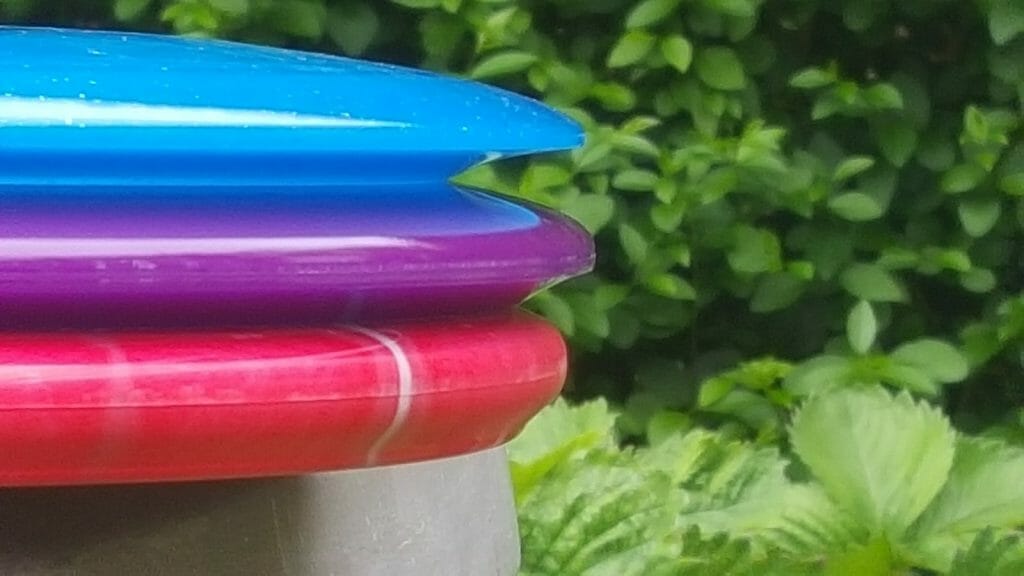Disc golf discs fly through the air, but how do they work? Their design and flight mechanics make them unique.
Disc golf is a popular sport that combines elements of traditional golf and Frisbee. Unlike regular Frisbees, disc golf discs have specific designs that affect their flight paths. The shape, weight, and rim width all play crucial roles. Understanding these factors can help players choose the right disc for different shots.
This knowledge can improve your game. In this blog post, we will explore how disc golf discs work. We will break down their features and explain their effects on flight. Whether you are new to the sport or looking to improve your skills, this guide will provide valuable insights. Let’s dive in!
Table of Contents
Disc Golf Basics
Disc golf is a fun and exciting sport. You play it using special discs. Knowing the basics of disc golf can help you enjoy the game more. Here, we will look at the types of discs and their components.
Types Of Discs
There are three main types of discs: drivers, mid-ranges, and putters. Each serves a different purpose. Drivers are for long-distance throws. They are slim and can fly far. Mid-ranges are for medium-distance throws. They are more stable than drivers. Putters are for short-distance throws. They are thicker and fly straight. Each type of disc has its own role in the game.
Disc Components
Discs have three main parts: the rim, the flight plate, and the nose. The rim is the outer edge. It affects how the disc flies and feels in your hand. The flight plate is the flat part in the middle. It affects the disc’s stability. The nose is the front part of the disc. It impacts the disc’s aerodynamics. Understanding these parts can help you choose the right disc.

Credit: www.pdga.com
Flight Dynamics
Understanding flight dynamics is essential for improving your disc golf game. Flight dynamics encompass the behavior and movement of the disc during flight. This involves analyzing various factors that influence how the disc travels through the air.
Aerodynamics
Aerodynamics plays a crucial role in disc golf. The shape of the disc affects its flight. Discs with a wider rim tend to glide more. Those with a beveled edge cut through the air faster. The weight distribution of the disc also matters. Heavier discs are less affected by wind. Lighter discs may float more and are easier to control.
Flight Path Factors
Several factors influence the flight path of a disc. The angle at which you release the disc is critical. A flat release leads to a straight flight. An angled release causes the disc to curve. The speed at which you throw affects the distance. Faster throws cover more ground. The spin you impart stabilizes the disc. More spin keeps it flying smoothly.
Throwing Techniques
Throwing techniques in disc golf can significantly affect your performance. Proper techniques help you achieve better distance, control, and accuracy. Understanding the fundamentals can make a big difference in your game. Let’s explore different grip styles and throw types to enhance your skills.
Grip Styles
The way you hold your disc is crucial. There are several grip styles to consider:
- Power Grip: All four fingers under the rim, thumb on top. Provides maximum distance.
- Fan Grip: Fingers spread out under the disc, thumb on top. Offers better control for shorter throws.
- Forehand Grip: Index and middle fingers inside the rim, thumb on top. Ideal for sidearm throws.
- Hybrid Grip: Combination of power and fan grips. Balances distance and control.
Throw Types
Different throw types can achieve various flight patterns and distances. Here are some common throws:
| Throw Type | Description |
|---|---|
| Backhand | Throw across the body with the back of the hand facing the target. |
| Forehand | Throw with the palm facing the target. Also known as sidearm. |
| Overhand | Throw over the shoulder, similar to a baseball pitch. |
| Roller | Throw the disc to roll on the ground for extra distance. |
Experiment with these throws and grips. Find what works best for you. Practice makes perfect!

Credit: discgolf.ultiworld.com
Disc Selection Tips
Choosing the right disc golf disc can improve your game. Different discs have unique flight patterns and purposes. Understanding which disc to use can make a big difference. In this section, we’ll discuss some important tips for selecting the right disc for your needs.
Skill Level Considerations
Beginners often benefit from lighter discs. They are easier to control. Choose discs with higher glide ratings. They stay in the air longer. For more advanced players, heavier discs offer more precision. They can handle stronger throws and provide better accuracy.
Course Conditions
Course conditions also influence disc selection. On windy days, use more stable discs. They resist turning and provide better control. For wooded courses, choose discs with a smaller diameter. They navigate tight spaces more easily. Wet or muddy conditions might require discs with better grip. They prevent slipping during throws.

Credit: www.altamontbeerworks.com
Frequently Asked Questions
What Are The Main Types Of Disc Golf Discs?
Disc golf discs come in three main types: drivers, mid-range, and putters. Each serves a different purpose.
How Does Disc Weight Affect Flight?
Lighter discs tend to fly farther, while heavier discs provide more control. Choose based on your throwing style.
Why Do Disc Golf Discs Have Different Rims?
Different rims impact grip and aerodynamics. Wider rims offer speed, while narrower rims enhance accuracy.
Conclusion
Understanding how disc golf discs work can improve your game. The design of the disc affects its flight path. Choose the right disc for your needs. Practice different throws to see what works best. Remember, wind and terrain also play a role.
Keep learning and enjoy the game. Disc golf is fun and challenging. Keep practicing and watch your skills grow. Happy playing!
Leave a Reply